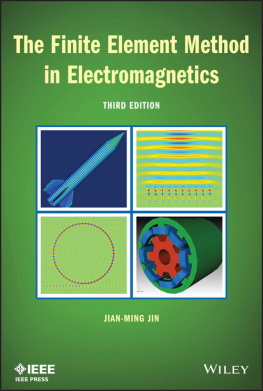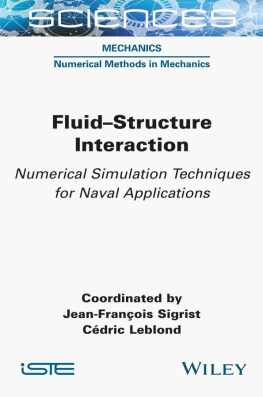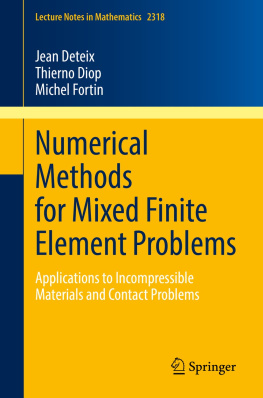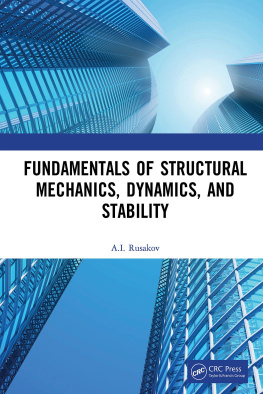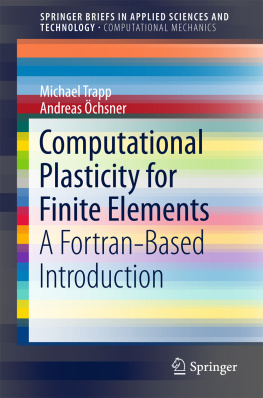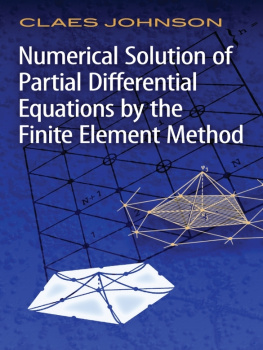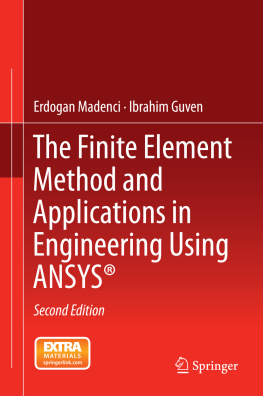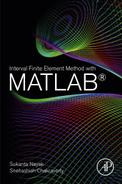THE FINITE ELEMENT METHOD IN ELECTROMAGNETICS
Copyright 2014 by John Wiley & Sons, Inc. All rights reserved.
Published by John Wiley & Sons, Inc., Hoboken, New Jersey. All rights reserved. Published simultaneously in Canada.
No part of this publication may be reproduced, stored in a retrieval system, or transmitted in any form or by any means, electronic, mechanical, photocopying, recording, scanning, or otherwise, except as permitted under Section 107 or 108 of the 1976 United States Copyright Act, without either the prior written permission of the Publisher, or authorization through payment of the appropriate per-copy fee to the Copyright Clearance Center, Inc., 222 Rosewood Drive, Danvers, MA 01923, (978) 750-8400, fax (978) 750-4470, or on the web at www.copyright.com . Requests to the Publisher for permission should be addressed to the Permissions Department, John Wiley & Sons, Inc., 111 River Street, Hoboken, NJ 07030, (201) 748-6011, fax (201) 748-6008, or online at http://www.wiley.com/go/permission .
Limit of Liability/Disclaimer of Warranty: While the publisher and author have used their best efforts in preparing this book, they make no representations or warranties with respect to the accuracy or completeness of the contents of this book and specifically disclaim any implied warranties of merchantability or fitness for a particular purpose. No warranty may be created or extended by sales representatives or written sales materials. The advice and strategies contained herein may not be suitable for your situation. You should consult with a professional where appropriate. Neither the publisher nor author shall be liable for any loss of profit or any other commercial damages, including but not limited to special, incidental, consequential, or other damages.
For general information on our other products and services or for technical support, please contact our Customer Care Department within the United States at (800) 762-2974, outside the United States at (317) 572-3993 or fax (317) 572-4002.
Wiley also publishes its books in a variety of electronic formats. Some content that appears in print may not be available in electronic format. For information about Wiley products, visit our web site at www.wiley.com .
Library of Congress Cataloging-in-Publication Data:
Jin, Jian-Ming, 1962
The finite element method in electromagnetics / Jianming Jin. Third edition.
pages cm
Includes bibliographical references and index.
ISBN 978-1-118-57136-1 (cloth)
1. ElectromagnetismMathematical models. 2. Finite element method. 3. Electromagnetic wavesMathematical models. I. Title.
TK7872.M25J56 2014
621.3824dc23
2013035519
To my wife, Joanna,
and our children, Angela,
David, and Joy
PREFACE
It has been more than 20 years since the publication of the first edition and nearly 12 years since the publication of the second edition of this book. The finite element method has experienced phenomenal growth in the field of computational electromagnetics during these periods. While the early effort was focused on developing the method to model electromagnetic fields correctly and solve electromagnetic problems accurately, the recent effort has been focused more on enhancing the power and expanding the capability of the method to deal with large-scale, complex, and real-life engineering electromagnetic problems through the development of new, more efficient algorithms and effective utilization of new computer technologies. The development of the time-domain finite element method, including the discontinuous Galerkin time-domain method, and a variety of domain decomposition methods during the past decade, together with a variety of new applications, serves as a great testimonial to the success of the recent effort. The purpose of this third edition is to reflect these new developments and applications.
The major changes in the third edition include a significant revision of Chapter 12 on the time-domain finite element method, the addition of two new chapters on the finite element analysis of periodic structures (Chapter 13) and on the domain decomposition methods for finite element analysis of large-scale electromagnetic problems (Chapter 14), the addition of two new sections on higher-order hierarchical vector basis functions (Section 8.7) and on symmetric finite elementboundary integral formulations (Section 10.7), and the removal of the chapter on the method of moments and fast solvers. In addition, there are many relatively minor changes to improve presentation and to add new application examples. Because young generations are no longer familiar with Fortran programming, all the Fortran codes have been converted into pseudo codes.
Chapter 12 on the time-domain finite element method is now organized as follows. The chapter starts with the finite element formulation in the time domain and derives time-stepping equations by finite differencing, such as forward, backward, and central differencing, and the Newmark-beta method. It then presents a scheme to analyze the stability of the time-stepping equations. After that, it deals with modeling of both electrically and magnetically frequency-dispersive media, and discusses a variety of important mesh truncation techniques, which include absorbing boundary conditions, perfectly matched layers, boundary integral equations, and waveguide port boundary conditions. Perfectly matched layers and boundary integral equations provide effective truncation for analysis of unbounded open-region scattering and radiation problems, and waveguide port boundary conditions provide perfect absorption and excitation at waveguide ports, which are important for analysis of microwave devices, antennas, and circuits. In this chapter we also discuss how to employ the time-domain finite element method for a hybrid fieldcircuit analysis to effectively model and simulate complex microwave circuits with embedded lumped circuits. Finally, we deal with one of the most challenging problems for the time-domain finite element method, which is its efficiency. To overcome this challenge, we present a physics-motivated dual-field domain decomposition method and its special version called the element-level time-domain method. We also formulate two popular discontinuous Galerkin time-domain methods and compare them with the element-level time-domain method to evaluate their accuracy and performance.
Chapter 13 on the finite element analysis of periodic structures is added because of widespread applications of periodic structures in electromagnetics, microwave engineering, radar, and optics. In this chapter we first present the finite element formulation of the field in the unit cell of an infinitely periodic structure, and illustrate its application in the dispersion analysis of one- and two-dimensional periodic media. Next we deal with the finite element analysis of two-dimensional scalar fields, with a focus on the truncation of the computational domain in the nonperiodic direction with a Floquet absorbing boundary condition. We then extend the analysis from the frequency to the time domain by introducing a transformed wave function. After that, we formulate the finite element analysis for three-dimensional vector fields, both in the frequency and time domains. Finally, we describe the finite element analysis of scattering and radiation by an angular periodic structure or a discrete body of revolution. Throughout the entire chapter, we give examples to illustrate the application and demonstrate the capability of the finite element analysis.

